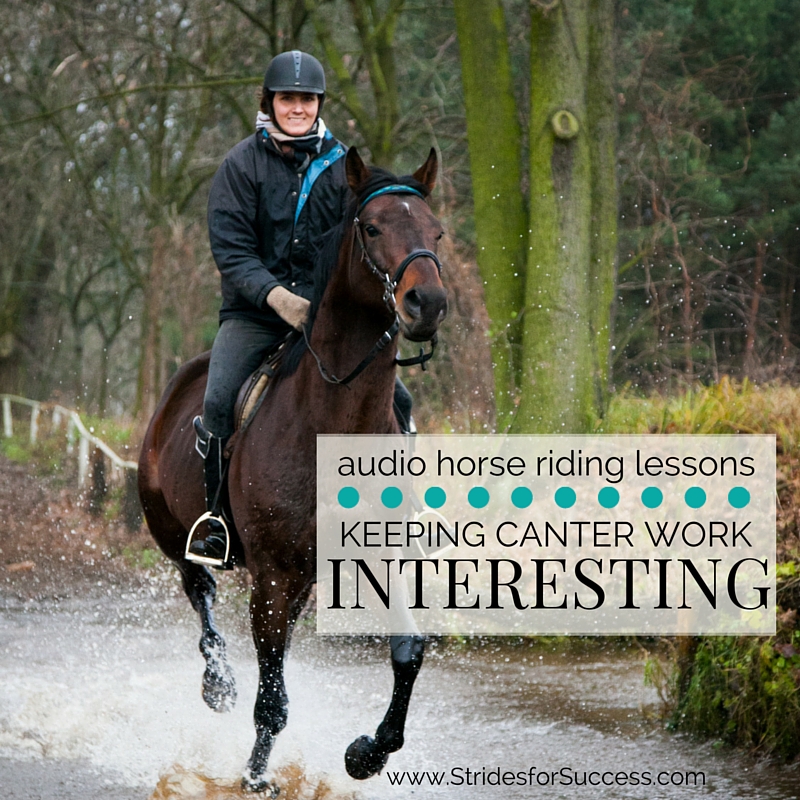I’ve often wondered what it is about the canter that makes riders almost seem to ignore it when schooling in the arena. I see riders put so much time, care, and attention into the trot and to a lesser degree, the walk…
But the canter is more often than not relegated to a few ‘laps’ of the arena and then back to more of the same with walking and trotting…
In this week’s episode of the Daily Strides Podcast, we are focusing on some ways you can incorporate more canter work into your schooling sessions…

Canter work can require some serious work from both you and your horse. It is easy to become tired while we are cantering and with tiredness comes a sense of complacency with the quality of the gait. During this episode, we are covering four main points that will help keep you on track with your cantering and allow you and your horse to perform at your best.
1. Establish Rhythm in Your Canter
When you begin cantering initially I strongly suggest focusing on establishing a rhythm. From here begin to notice when that rhythm and, later, tempo change and what may be causing this to happen.
Pay particular attention to when ‘changes’ happen, such as a corner, a pole, or a jump.
Being able to keep a consistent rhythm and tempo is vital to good quality canter work.
Ride a Rectangle or Square (not an oval)
The second point we cover is when you initially begin canter work, rather than riding a large oval shape around the arena, ride a rectangle. This is obviously when you are going large.
By making a dedicated effort to ride a rectangle (or whatever shape your arena is), you will use your corners and straight lines on the ‘long and short sides’.
This will give you the opportunity to use your half-halt before each ‘corner’. And also work on your aids to help your horse remain balanced around each bend.
3. Pay Attention to Your Body Riding Canter Work
The third focus point is what your body is doing while your horse is cantering. The fact of the matter is that the bounding feeling that we can get while we canter invites us to get slightly ahead of the movement…
And as always, we cannot ride our horse while sitting on the neck.
So make a consistent effort to keep your position while you are working in the canter.
4. Your Posture when Cantering
The final point that we touch on today and to take into consideration is the position of your shoulders, seat bones, and legs while your horse is working in the canter.
This is particularly important when you are beginning to feel tired…
This is when our lower legs can begin to swing backward and forwards. It is also when we are more prone to collapsing our bodies and becoming ‘heavy’ in the saddle.
I have included links to other more detailed blog posts and Daily Strides Podcast episodes to help you in your canter. You can also download a FREE EXERCISE to use with your horse HERE
Happy Riding
Lorna
Additional Resources to Help with This Topic
-
-
-
- Developing Your Seat in the Canter
- 3 Steps to Better Canter Transitions
- 3 Ways You Are Ruining Your Transitions from Trot to Canter
- Asking for the Correct Canter Lead when on the Straight
- Straightness in the Canter
- Using Your Body to Effectively Influence the Canter
- The Returning to Riding Program – Getting the Basics on Autopilot in Your Riding
- Equestrian Fitness Challenge
- Subscribe to the Daily Strides Podcast
- Join the free Strides for Success Online Community
-
-

1 Comment